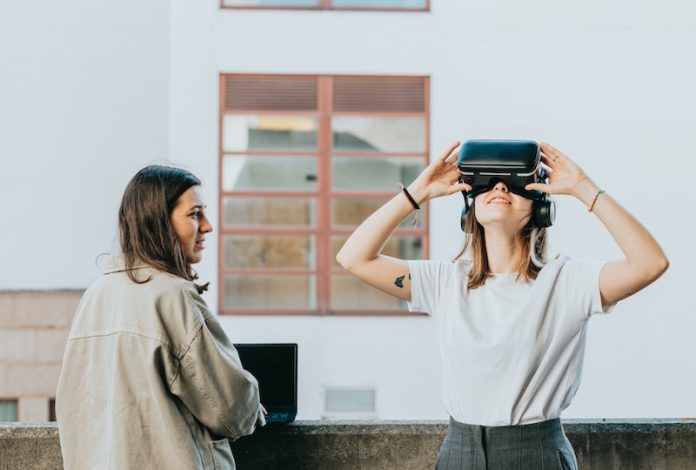
At the University of Missouri, a researcher named Noah Glaser, working with Matthew Schmidt from the University of Georgia and others, is using virtual reality headsets for something truly valuable.
They’re helping autistic individuals learn how to use public buses, especially in college settings. This is more than just games; it’s about making real-life easier.
Glaser’s team, in collaboration with a program at the University of Cincinnati, conducted studies to create virtual training for autistic people.
This training helps them practice traveling by bus around town. It’s a big help because autistic people often find their surroundings overwhelming, and this can make things like catching a bus really challenging.
The researchers used artificial intelligence (AI) to understand how autistic individuals see the world differently from others. They found that autistic people often get distracted more easily, especially in busy places like bus stops, because of how they process sensory information.
Glaser, an assistant professor at MU, pointed out that there’s a lot of medical research on autism, but they wanted to explore other ways to help autistic people feel more at ease in everyday life.
Learning by Doing
One part of their research focused on how young autistic adults use a bus system on a college campus. The team created a virtual reality simulation that looks just like a real university campus and its bus system.
They used AI to track how the participants, wearing VR headsets, paid attention to different things during their virtual trip to the bus stop. They then compared this with people who don’t have autism to spot any differences.
This study isn’t just about observing, though. The virtual simulation includes an instructor who shows participants how to do things, like getting to the bus stop. This way, they can practice in a safe and controlled setting before trying it out in real life.
Glaser believes understanding how autistic people interact with computer technology is crucial, especially since they’re often left out of these discussions. This knowledge can help make virtual learning better suited for them.
Beyond the Research
But this research isn’t just about buses. Glaser sees it as just the beginning of exploring how AI and virtual reality can support people with different ways of thinking, especially in education.
He envisions these tools being used for training in areas like cybersecurity and STEM (science, technology, engineering, and math) fields, where neurodiverse individuals are underrepresented.
Glaser hopes that the skills learned in virtual reality can be transferred to real-life situations. This can boost the self-confidence of neurodiverse learners and their ability to contribute to society.
He emphasizes the importance of including neurodiverse individuals in the design process of learning interventions.
Their work, titled “Through the lens of artificial intelligence: A novel study of spherical video-based virtual reality usage in autism and neurotypical participants,” and “Programming for generalization:
Confronting known challenges in the design of virtual reality interventions for autistic users,” was published in the journal Computers & Education: X Reality.
This research opens up new possibilities for inclusive learning environments and a better understanding of how neurodiverse individuals interact with technology.
If you care about autism, please read studies about a new cause of autism, and cats may help decrease anxiety for kids with autism.
For more information about health, please see recent studies about vitamin D that may hold the clue to more autism, and results showing strange eating habits may signal autism.
The research findings can be found in Computers & Education: X Reality.
Copyright © 2024 Knowridge Science Report. All rights reserved.



